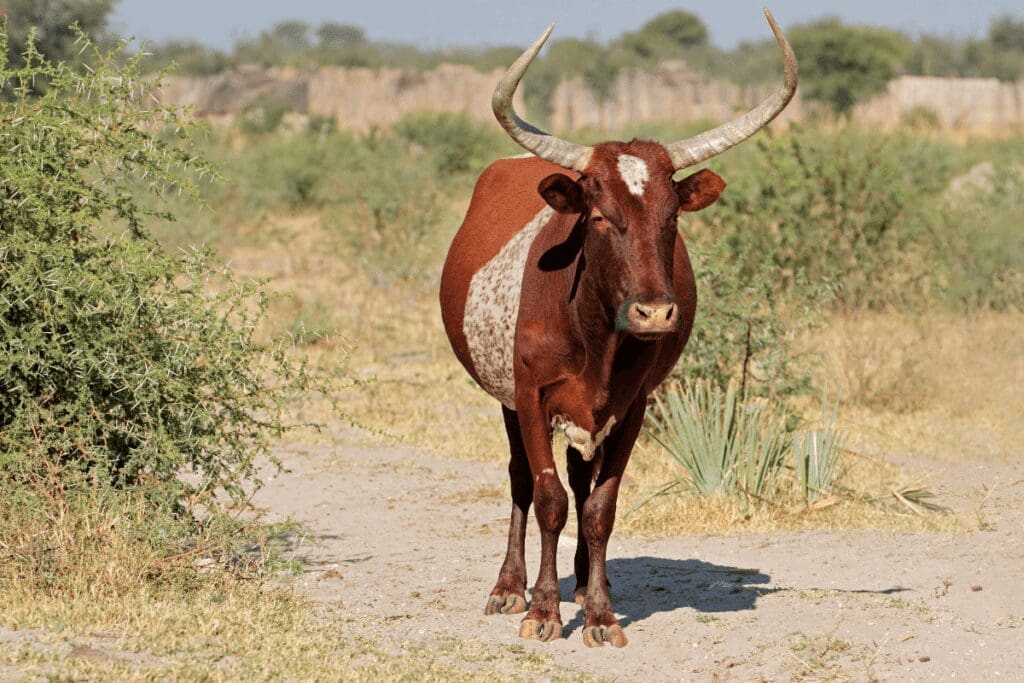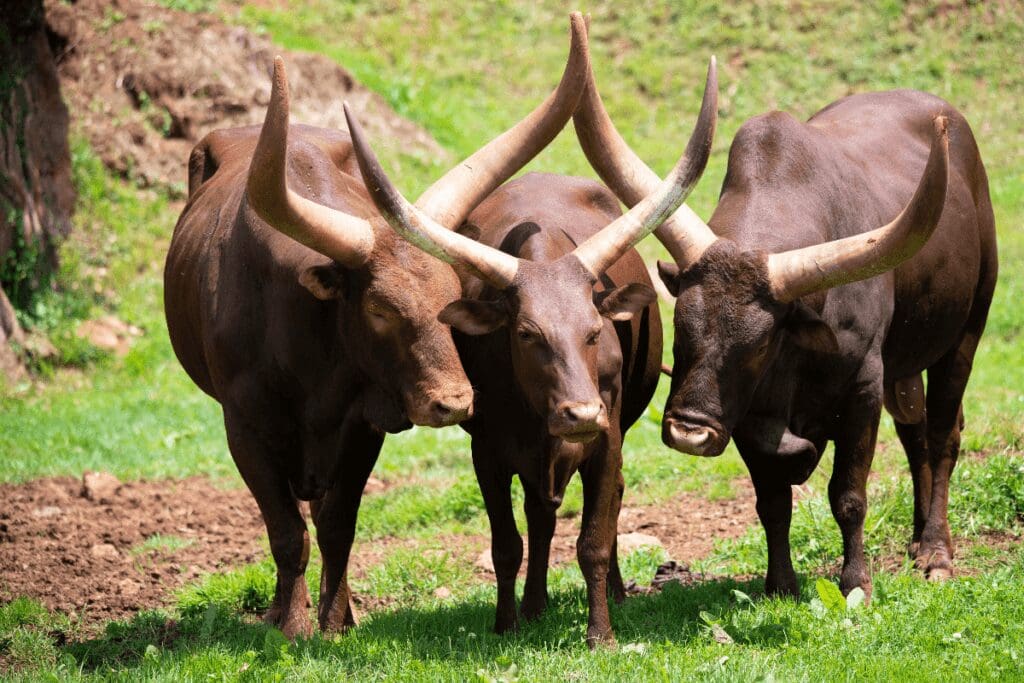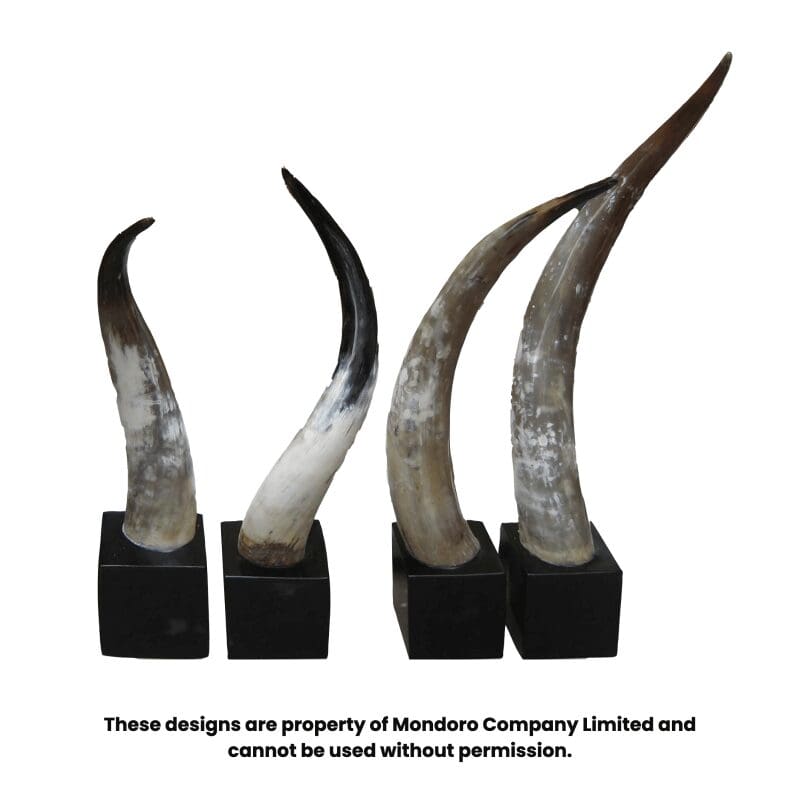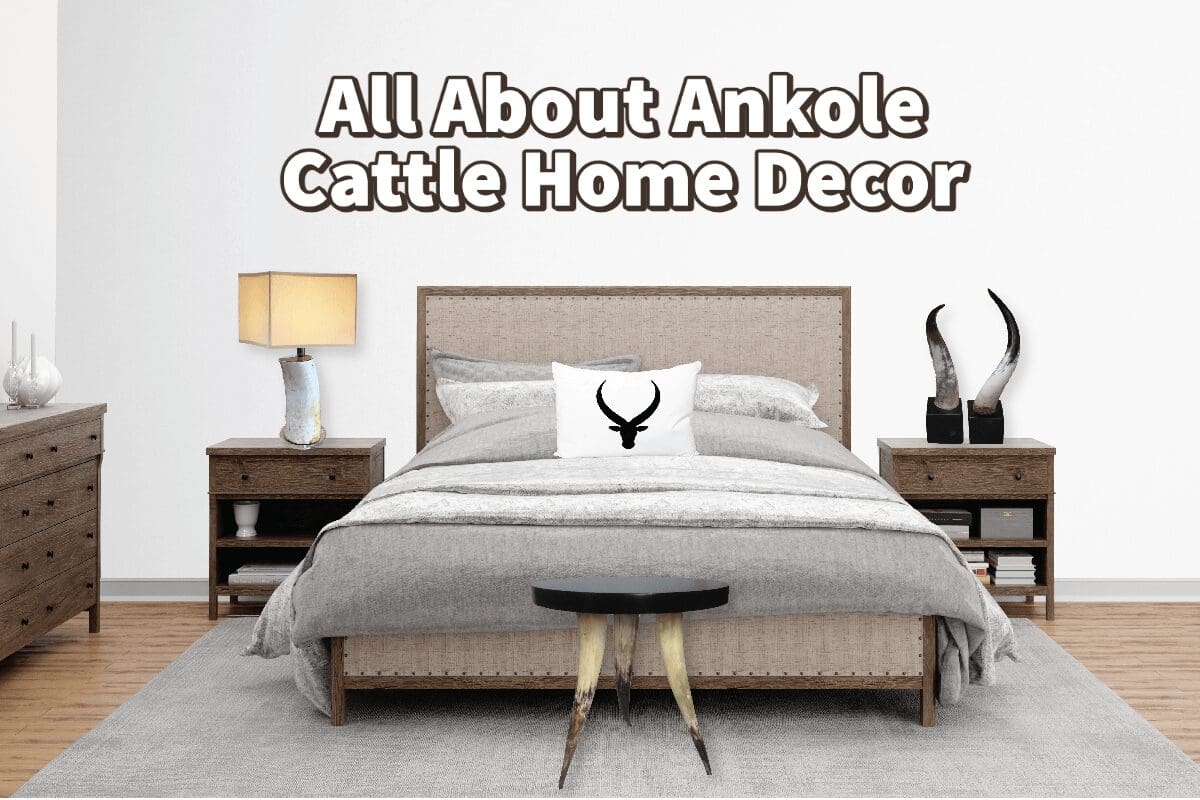The majestic Ankole Cattle has long been considered an essential and sacred animal in central and east Africa. The Ankole cattle have long majestic horns that come out of its head.
The Ankole cattle are also a food source for milk and meat in central and east Africa; the horns are considered waste. At Mondoro, we ethically source the horns to turn them into home decor and home furnishing products.
About The Ankole Cattle

One of the most surprising things that many people may not understand is that the horn used in the Ankole cattle decor is from an actual breed of African cattle. This breed of cattle belongs to what is known as the broad Sanga cattle group of African species.
It is thought that it was first introduced in Uganda between five and seven hundred years ago by nomadic people who may have been traveling in that area of Africa. The Ankole Cattle then migrated to other parts of Africa to eventually include most central and eastern Africa.

The cattle are often called Ankole-Watusi as they are named after the Watusi tribe in Africa. The Ankole is a domesticated cattle species.
The Ankole cattle are very active and highly social cattle who prefer to live in a large herd. They usually sleep in a large circle with the younger calves on the inside and the larger animals on the outer side of the ring to help protect the cattle within the circle.
For many of the breeders in Africa, cattle are considered extremely important. The Ankole cattle hold a sacred place in the lives of the tribe people in central and east Africa, where most of the Ankole cattle are located.
The herder uses the Ankole cattle as a food source of primarily meat and milk. The Ankole cattle are also a status and wealth; many herder’s wealth is defined by how many Ankole cattle they have and how big those cattle are.
The Ankole Cattle are unique because of their vast horns that get out of their heads. The horns are like a majestic crown that they wear proudly.
Today, you can even find the Ankole Cattle in the United States under the name of Ankole-Watusi. Most of the Ankole Cattles located outside Africa are now located in the United States.
Ethically Sourced Ankole Cattle Horns

At Mondoro, we believe in ethical sourcing; we ensure any horn materials we purchase are ethically sourced. Our horns originated from East Africa. Our supplier who imports them into Vietnam can purchase the horns from the African stockyards.
No animals are killed just for their horns, and the horns are a waste by-product from the cattle being used for other things as meat. Using the horns is a way to upcycle what would have once gone to waste.
Here are some different ways that Ankole Cattle are used in Africa:
- Ankole Cattle is used for milk to make ghee and yogurt because their milk has a high-fat content.
- Ankole Cattle is slaughtered to be used for meat. Also, blood collected from the slaughterisused to make some local delicacy cuisine.
- Cattle waste or cow dung is used for mud to finish the houses; the manure is used in the gardens.
- Cattle urine is used for some traditional medicinal purposes.
- Skin and hide are used for decoration and made into clothes for some local people.
- Ankole cattle horns are used to be made into a decoration or for decorative purposes.
As you can see, even in Africa, where these cows are located, not one single part of the Ankole cattle are wasted. The cattle are not slaughtered just for their horns, but instead, the horns are one part of how the cattle are traditionally used.

The Ankole cattle horns we use for production are ethically sourced from the stockyards after being killed for meat. The horns are then shipped to Hanoi, Vietnam.
Once in Hanoi, they were processed and cut by our horn supplier, a factory in the horn village outside of Hanoi, Vietnam. For hundreds of years, the Vietnamese have been cutting, polishing, and sanding all kinds of horn and bone products, including animal bone, buffalo horns, and the Ankole Cattle horns.
Ankole Cattle Have Very Large Horns
One of the things that make these Ankole horns so unique is that the Ankole cattle horns are significantly larger than many other natural horns. The horns on the cattle can grow up to 1.8 meters (6 feet) long.
It is these very unique and long horns that give them such value. Depending on the cattle, the horns also have a very long diameter, anywhere from 8 to 5 inches long.
Ankole Horn Decor Is Naturally Elegant
The Ankole home decor is a naturally elegant natural product. Once the Ankole horns are polished, you can find rich black, tans, browns, greys, and whites colors on horns.

For us to see the horns’ natural colors, the horns must be polished to a high luster. We often do not know the exact color look until we polish the horn.
To polish the horns, we use a particular machine and sanding process. Besides the polishing, we will also buff all the horn pieces.
When using the horns for specific purposes as a table leg or another kind of artifact, we often need to pick through the horns to find the horns that can be used for the purpose we need it. We often need to dig through stacks of horn pieces to pick out the very best ones.
As this is a natural product, some of the horns will grow straight up or with a nice curve, and others may have a more pronounced curve. All of this, such as the curve, color and diameter, length, and other sizes, are all part of the Ankole cattle’s horn natural elements and are something we cannot control.
We love the Ankole horn as a product that can be produced and manufactured. We love the fact that the Ankole horn is an upcycled product that would be thrown away as waste if not purchased or used for home decor or the home furnishing industry.
We also love the natural beauty and color of these magnificent Ankole Cattle horns.
If you are interested in seeing how Mondoro can help you manufacture Ankole horn home decor and home furnishing products – we would love to talk to you to see how we can help you.
Find out more about how Mondoro can help you create, develop, and manufacture fantastic home decor and home furniture products – don’t hesitate to contact me, Anita. Check out my email by clicking here or become a part of our community and join our newsletter by clicking here.
Mondoro gives out a FREE Lookbook to anyone interested. You can receive a copy of our latest Lookbook by clicking here.
Listen to our Podcast called Global Trade Gal. You can find it on all major podcast platforms. Try out to listen to one of our podcasts by clicking here.
Subscribe to our Mondoro Company Limited YouTube Channel filled with great videos and information by clicking here.
Related Content
The Ankole-Watusi Big-horned African Cow and Home Decor Products
The Ankole-Watusi big-horn African cow is a medium-size cattle that have very longhorns. These cows are found mainly in Africa. The cow is not an endangered species, so cows are sold as meat, and the horns are then sold to make home decor and jewelry items. This ensures that every part of the cow is somehow used and nothing goes to waste.
You can discover more by reading The Ankole-Watusi Big-horned African Cow and Home Decor Products by clicking here.
10 Great Vietnamese Home Décor Product Finishes and Techniques We Love
We love many techniques, materials, and finishes in Vietnam, but some of our favorite ones are Vietnamese lacquer, mother of pearl, eggshell, and faux paper finishes. We also do some unique woven rattan and linen techniques.
You can discover more by reading 10 Great Vietnamese Home Décor Product Finishes and Techniques We Love by clicking here.

